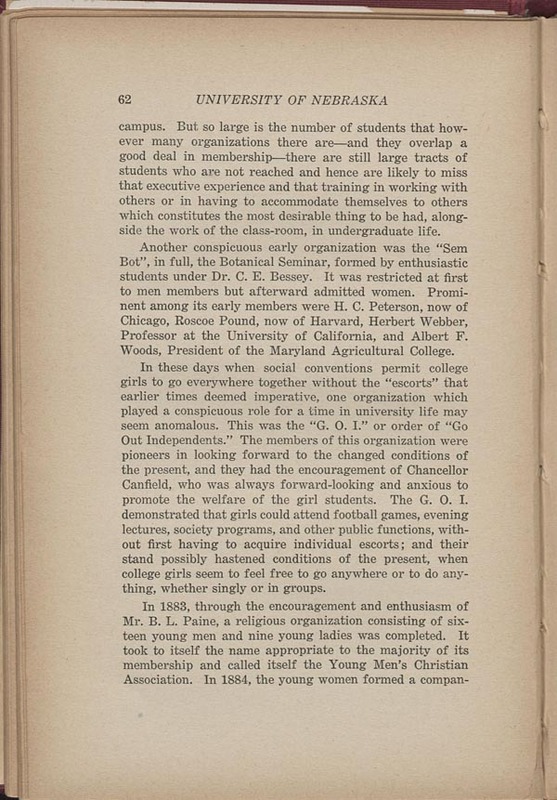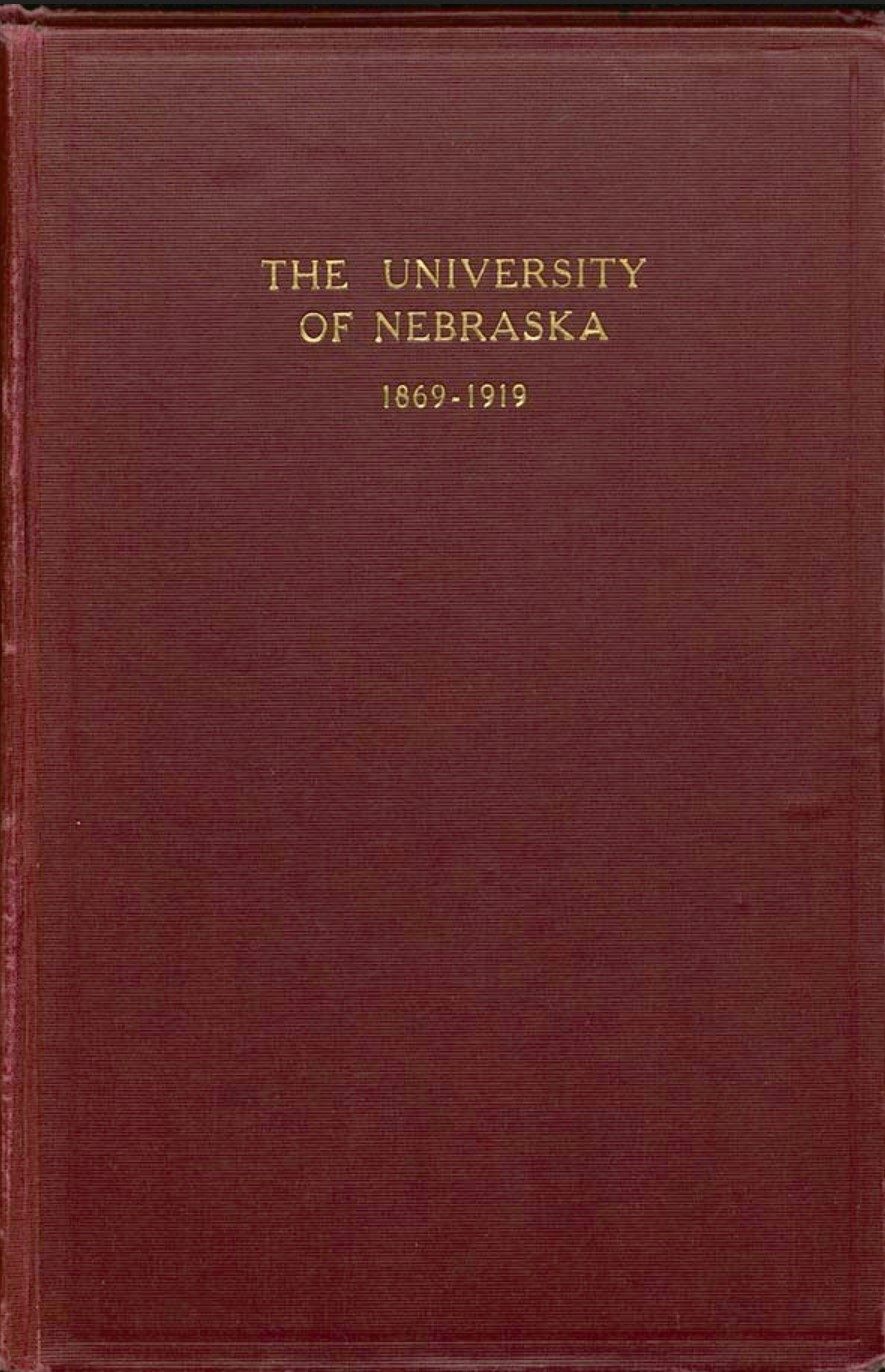066
Item
-
Title
-
066
-
Description
-
Semi-Centennial Anniversary Book: The University of Nebraska, 1869-1919
-
Transcription
-
campus. But so large is the number of students that however many organizations there are—and they overlap good deal in membership—there are still large tracts of students who are not reached and hence are likely to miss that executive experience and that training in working with others or in having to accommodate themselves to others which constitutes the most desirable thing to be had, along-side the work of the class-room, in undergraduate life.
Another conspicuous early organization was the "Sem Bot", in full, the Botanical Seminar, formed by enthusiastic students under Dr. C. E. Bessey. It was restricted at first to men members but afterward admitted women. Prominent among its early members were H. C. Peterson, now of Chicago, Roscoe Pound, now of Harvard, Herbert Webber, Professor at the University of California, and Albert F. Woods, President of the Maryland Agricultural College.
In these days when social conventions permit college girls to go everywhere together without the "escorts" that earlier times deemed imperative, one organization which played a conspicuous role for a time in university life may seem anomalous. This was the "G. O. I." or order of "Go Out Independents." The members of this organization were pioneers in looking forward to the changed conditions of the present, and they had the encouragement of Chancellor Canfield, who was always forward-looking and anxious to promote the welfare of the girl students. The G. O. I. demonstrated that girls could attend football games, evening lectures, society programs, and other public functions, without first having to acquire individual escorts; and their stand possibly hastened conditions of the present, when college girls seem to feel free to go anywhere or to do anything, whether singly or in groups.
In 1883, through the encouragement and enthusiasm of Mr. B. L. Paine, a religious organization consisting of sixteen young men and nine young ladies was completed. It took to itself the name appropriate to the majority of its membership and called itself the Young Men's Christian Association. In 1884, the young women formed a compan-
-
Rights
-
To inquire about usage, please contact Archives & Special Collections, University of Nebraska-Lincoln Libraries. These images are for educational use only. Not all images are available for publication.



